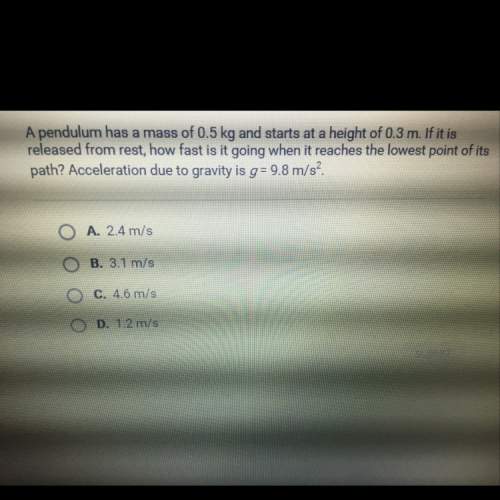
Physics, 04.03.2020 23:39 jade611135
4. A 620.-kg moose stands in the middle of the railroad tracks, frozen by the lights of an oncoming 10,000.-kg
locomotive that is traveling at 10.0 m/s. The engineer sees the moose but is unable to stop the train in time and
the moose rides down the track sitting on the cowcatcher. What is the new combined velocity of the locomotive
and the moose?

Answers: 2


Other questions on the subject: Physics

Physics, 21.06.2019 19:30, schoolboyq3017
Can somebody explain to me how newton's 3rd law relates to momentum? ~ap physics 1
Answers: 2

Physics, 21.06.2019 23:20, lailabirdiemae
Initially, a particle is moving at 5.33 m/s at an angle of 37.9° above the horizontal. two seconds later, its velocity is 6.11 m/s at an angle of 54.2° below the horizontal. what was the particle's average acceleration during these 2.00 seconds in the x-direction (enter first) and the y-direction?
Answers: 1


Physics, 22.06.2019 07:50, brittneeyy
Determine the fraction of the magnitude of kinetic energy lost by a neutron (m1 = 1.01 u) when it collides head-on and elastically with a target particle at rest which is 21h (heavy hydrogen, m = 2.01 u).
Answers: 3
You know the right answer?
4. A 620.-kg moose stands in the middle of the railroad tracks, frozen by the lights of an oncoming...
Questions in other subjects:





Biology, 30.09.2019 10:30



Social Studies, 30.09.2019 10:30

Mathematics, 30.09.2019 10:30




